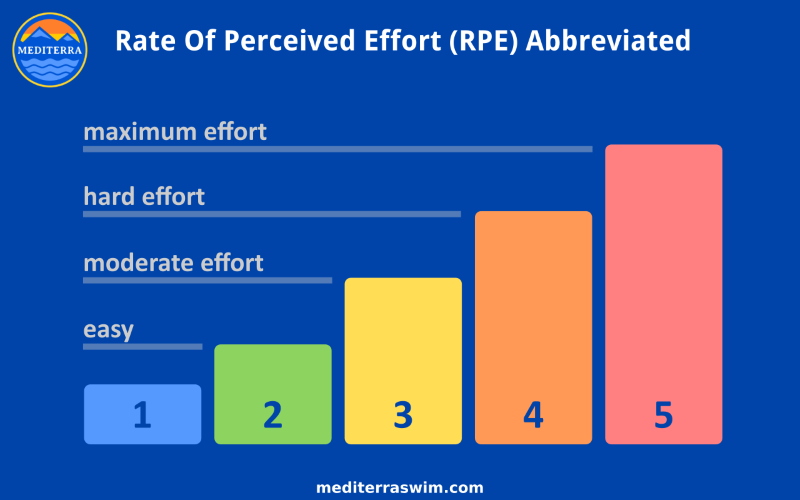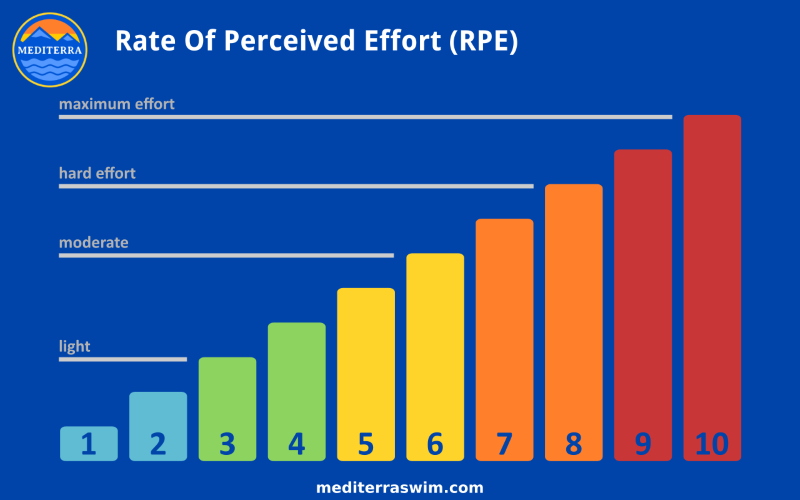by Admin Mediterra | Sep 27, 2020 | Practice Design
In order to make progress you need to measure and monitor information coming from your body and from your performance. Your progress will depend on improvements inside the body which correspond to improvements in performance (swimming easier, swimming farther, swimming faster) measured outside the body.
Measuring Quantities, Measuring Qualities
What is happening on the inside of the body (how does it feel?) – a quality – will correspond to what is happening outside the body (what does it produce?) – a quantity.

You can read more about these internal (subjective) measurements in this post on Two Essential Measurements. And these are the external (objective) measurements.

In every practice, in every swim, you will monitor those internal sensations, or what are called ‘subjective feedback’. Some of these may be assigned specifically:
On many of your practice sets you will also measure external results, or what are called ‘objective feedback’. Some of these may be assigned specifically:
- Stroke count
- Tempo
- Pace
- Distance or duration
- Amount of rest
For a simple rating system, see Simple Rating System for Your Practice Results.
by Admin Mediterra | Sep 27, 2020 | Practice Design
Abbreviated RPE Scale
If you are new to interpreting your sense of effort, you may start by using this abbreviated (short) scale for RPE with just 5 levels…

RPE Quick Definitions
To help with a more common reference point, let me use running or moving fast on land to make a connection to how we might perceive effort in swimming.
RPE #1 is like WALKING.
You can maintain your best technique at this Pace with little concentration, and hold about SPL N-2, or near the lowest point of your Optimal Green Zone. You can swim ‘endlessly’ at this Pace.
RPE #2 is like JOGGING.
You can maintain your best technique, with concentration. SPL is N to N-1. You could hold this Pace for 100% of your racing distance, and use it for recovery in the middle of a race.
RPE #3 is like RUNNING or CRUISING comfortably.
You can maintain good technique, with strong concentration. SPL is up to N. You could hold this Pace for 100% of your racing distance.
RPE #4 is like RUNNING HARD, near your top aerobic capacity.
You can maintain good technique, with strong concentration. SPL is up to N+1. You could hold this Pace for 70% or more of your racing distance.
RPE #5 is like SPRINTING, in your anaerobic zone while maintaining good technique with extreme concentration.
SPL is up to N+2 or even N+3. You could hold this Pace only for up to 20% of your racing distance, at starts and finishes and occasional tactical sprints.
Rate of Perceived Effort Full
If you are more experienced in training and interpreting your sense of effort, you may use this commong 10-point RPE scale…

by Admin Mediterra | Sep 25, 2020 | Master Class Instructions
Here is a simple rating system you may use when evaluating your practice results, especially when you are focused a skill or quality in the body or stroke that is not easily measured in a more objective way.
You may use it in your discussions with your coach.
- 1 Star (♦) – disappointing – below my standard
- 2 Star (♦♦) – acceptable – at about the standard I have set for myself
- 3 Star (♦♦♦) – marvelous – above the standard I have set for myself
When your performance is at 1 star for more than 50% of the time consider lowering the complexity of the task in order to create a more suitable challenge level for your current neurological abilities.
When your performance is at 2 Star for more than 60% to 80% of the time, keep going. This is good imprinting work. If it is above 80% then you should consider raising your standard for quality, or raising the complexity of the task.
When your performance is at 3 Star for more than 30% of the time (Good Job!) you should consider increasing the complexity of your task.




